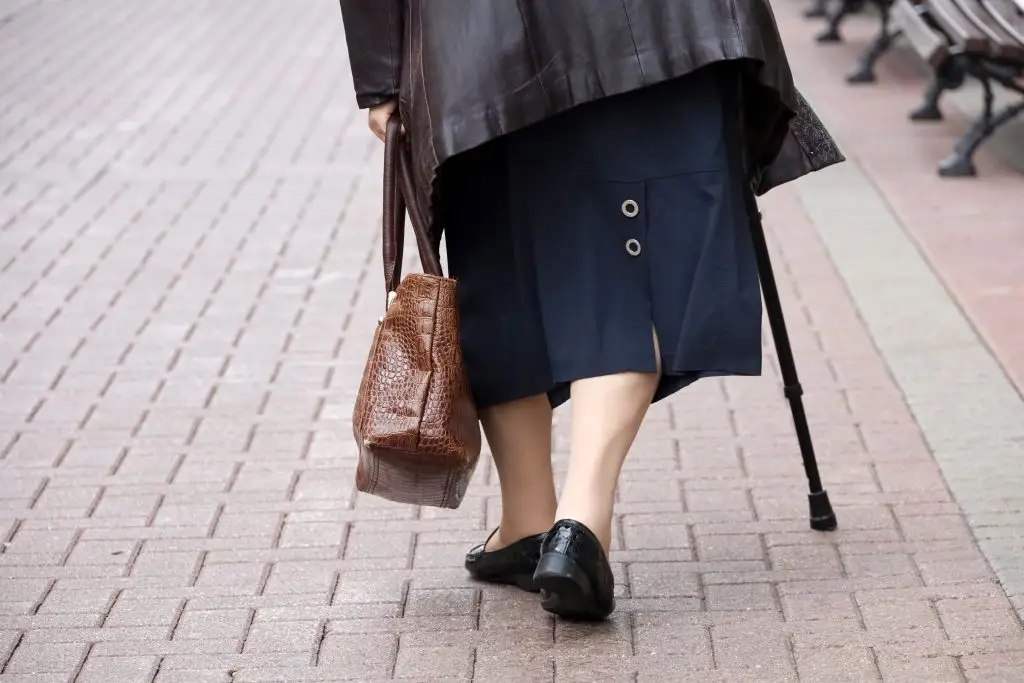Seeing or experiencing changes in the way you or a loved one walks can be concerning; you start to feel more worried about falls and have frustration over knowing something’s wrong. Symptoms like limping, unsteady footing, or difficulty maintaining balance while walking could be signs of an underlying issue, such as gait ataxia.
Fortunately, in many cases, these changes can be improved with the practice and training that a Physical Therapist can provide.
What is gait ataxia?
The term “ataxic” essentially means a loss of control or order, particularly in movement. When describing a person’s gait, it refers to difficulty in coordinating steps, maintaining balance, or achieving a smooth stride. This makes walking challenging and, in some cases, unsafe.
Unlike physical injuries such as sprains or fractures that could cause someone to limp, gait ataxia stems from neurological or vestibular system issues. This uncoordinated walking pattern is often described as “wobbly” or “staggering.”
Causes of ataxic gait
Several factors and conditions can cause gait ataxia, ranging from temporary disruptions in balance to chronic neurological diseases. Below are some of the most common causes of gait ataxia:
1. Cerebellar disorders
The cerebellum, located at the back of the brain, is responsible for coordination and fine motor skills. Damage to the cerebellum, whether caused by a stroke, trauma, or degenerative diseases, often results in abnormal gait or other balance issues.
2. Vestibular system disorders
The vestibular system, primarily controlled by the inner ear, plays a crucial role in balance and spatial orientation. Conditions like vestibular neuritis or Meniere’s disease can disrupt this system and lead to unsteady walking patterns.
3. Neuropathy
Peripheral neuropathy, often caused by conditions like diabetes or alcohol abuse, damages nerves in the feet and legs. This makes it difficult for individuals to sense the ground beneath them, leading to an unsteady gait.
4. Post-injury or post-surgery side effects
Trauma or surgeries involving the lower limbs may cause temporary ataxic gait due to muscle weakness or disrupted nerve signals. These cases can often improve with targeted rehabilitation.
5. Hereditary and sporadic degenerative processes
Sometimes, gait ataxia occurs without any obvious structural or physical cause. In some cases, genetic disorders such as Huntington disease can lead to ataxia, or unknown (sporadic or idiopathic) causes can travel through family trees.
One hereditary form of spinocerebellar ataxia affects the family of Bill Nye, who has become an advocate for research and awareness of ataxia and its treatment through the National Ataxia Foundation.
6. Vitamin deficiencies
In some cases, deficiencies in key vitamins, such as Vitamin B12, can impact nerve function, potentially resulting in ataxic gait.
Although the causes vary, understanding what’s behind gait ataxia is the first step toward finding the right treatment for you or your loved one.
Gait ataxia treatment
The good news is that gait ataxia doesn’t have to be debilitating forever. With proper intervention, many individuals can regain confidence and coordination in their walking through multiple treatments.
Physical therapy
Physical therapy is one of the most effective treatment options for some forms of gait ataxia. Through a combination of exercises and rehabilitative care, Physical Therapists can help re-train the brain and body to work better together. Treatment sessions for ataxia may focus on:
- Balance training to improve stability
- Exercises to strengthen core and leg muscles
- Gait retraining to restore a smoother walking pattern
Vestibular rehabilitation
For individuals whose ataxia stems from vestibular system issues, vestibular rehabilitation exercises can help recalibrate the inner ear and improve balance.
Neurological rehabilitation
When gait ataxia is linked to neurological conditions such as strokes or cerebellar damage, therapy often involves specific exercises to rebuild neural pathways and improve coordination. Tasks may include practicing controlled movements or learning to use assistive devices.
Assistive devices
Depending on the severity of the condition, walkers, canes, or orthotics may be temporarily or permanently used to ensure safety and improve mobility.
The key is early intervention and consistent practice, and working with a physical therapist can help maximize these benefits.
Gait and balance therapy at SSOR KC
At SSOR, we are passionate about helping our patients move with dignity and independence. Whether you’re dealing with gait ataxia due to a neurological issue, injury, or vestibular disorder, our specialized programs can help. Don’t wait to regain your independence and improve your quality of life.
Find out how we can help you or your loved one by calling a nearby clinic or by requesting an appointment online today.
